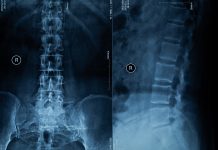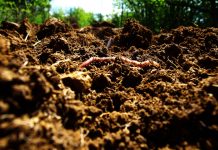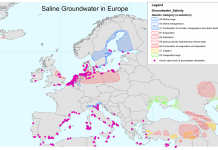Open Access Government produces compelling and informative news, publications, eBooks, and academic research articles for the public and private sector looking at health, diseases & conditions, workplace, research & innovation, digital transformation, government policy, environment, agriculture, energy, transport and more.
Home 2025
Archives
Charting the technical landscape of marine carbon dioxide removal
Dr Nils Thonemann and Mona Delval from the University of Leiden consider the scientific and technical requirements for effective evaluation of emerging marine carbon dioxide removal (mCDR) approaches.
Novel adjunct treatments for posttraumatic stress disorder: Neurofeedback and deep brain reorienting
Dr. Ruth Lanius, Scientist at London Health Sciences Centre Research Institute (LHSCRI) and Psychiatrist at London Health Sciences Centre (LHSC) discusses the need for novel adjunct treatments for posttraumatic stress disorder (PTSD), highlighting two promising approaches: neurofeedback and Deep Brain Reorienting (DBR).
The next step in regenerative medicine for osteoarthritis: Spscs and a new regulatory pathway
Osteoarthritis (OA) remains one of the leading causes of disability worldwide, burdening health systems and diminishing quality of life for millions.
Science Platform Sustainability 2030: Bridging science and policy for sustainable transformation
Julian Trutz Müller, a Scientific Officer at GERICS/wpn2030, discusses the importance of bridging science and policy for sustainable transformation, using the case study of the Science Platform Sustainability 2030 (wpn2030).
Piezo4Spine: Dreaming on a cure for paraplegic patients
Piezo4Spine is a European project that aims to develop a novel therapy to repair the injured spinal cord, a pathology for which a cure remains elusive. María C. Serrano tells us more.
Ancient greek heritage in (early modern) Europe
Natasha Constantinidou unpacks Ancient Greek heritage in (early modern) Europe through the project Greek Heritage in European Culture and Identity.
Overcoming barriers for efficient dialogue between research and practice
As climate and biodiversity crises grow more complex, productive exchange between researchers, practitioners and policymakers becomes crucial. This article outlines the hurdles to efficient dialogue and the approaches that can help build trust, shared understanding and real-world impact.
Liver regeneration in alcohol related liver disease
Recompensation in liver disease indicates both a physical and molecular improvement in liver functions. Molecular regeneration is key to improving liver function, and novel technologies in proteomics and RNA transcriptomics may hold the key to advancing liver regeneration in alcohol-related liver disease. Nina Kimer explains.
The dome marketplace: Building a trusted, unified cloud & edge ecosystem for Europe
Digital sovereignty remains a strategic priority for Europe, aiming to strengthen its digital resilience and empower European companies to compete globally in a trusted and transparent environment.
Indigenous health research program: Offering insights for better health
Dr. Mamata Pandey, Research Scientist at the Saskatchewan Health Authority in Canada shares insights from her Indigenous-partnered health research program, enhancing health.
Wellbalance elevates coaching through the science of personalized wellbeing
WellBalance’s “Wellbeing Balance and Lived-Experiences Model of Positive Wellbeing”, developed by Harvard-trained scientist Troy W. Norris, is the first scientifically validated experiential model of wellbeing.
Soil health: The importance of the rhizosphere
Lynette Abbott, Emerita Professor, The University of Western Australia School of Agriculture and Environment and UWA Institute of Agriculture, examines how the rhizosphere, a narrow collar of soil clinging to plant roots, is emerging as a key player in soil and plant health.
Business education at the crossroads: Transform or face irrelevance
The article, authored by Jean Garner Stead, calls for an urgent re-evaluation of business education to foster leaders capable of creating sustainable value in a rapidly changing world.
Cold climate heat pumps for GHG emission reductions: A smart-grid approach
Dr. M.F. Lightstone, P.Eng., FCSME, FCAE, from the Department of Mechanical Engineering at McMaster University, presents a smart-grid approach for cold climate heat pumps aimed at reducing greenhouse gas emissions.
The medieval march of Wales: Welsh or English?
Professor Helen Fulton at the University of Bristol, examines the case study of the Medieval March of Wales, a vibrant multicultural border region between...
From pilots to system value: AI, leadership and collaboration in value-based healthcare
As AI and robotics transform healthcare, the challenge is shifting from developing new tools to delivering measurable value for patients and health systems. This article explores how Value-Based Healthcare (VBHC) can help turn digital innovation into scalable, system-wide impact
Targeting the perimenopause window to delay ovarian ageing and enhance healthspan
Adjunct Assistant Professor Zhongwei Huang and Dr. Paula Benny discuss perimenopause and ovarian ageing, highlighting the importance of future interventions focused on early detection, personalized treatments, and lifestyle modifications to improve health outcomes and longevity.
Electrochemical interfaces: Crucial enablers of sustainable energy technologies
In this article, a team of expert scientists explains why electrochemical interfaces are crucial enablers of sustainable energy technologies.
Salinization of coastal groundwaters in the EU – What can we do about it?
Written as part of the LIFE-FRESHMAN project, this article examines the issue of coastal groundwater salinization in the EU, particularly its impact on freshwater reserves, and highlights key strategies for mitigation.
Collapse and persistence before 1713: Rethinking Khoekhoen political economy at the early Cape
Erik Green examines the complex interactions between the Khoekhoen and early European settlers, challenging conventional narratives of indigenous passivity and highlighting the resilience and agency of Khoe societies in the face of colonial pressures.





















